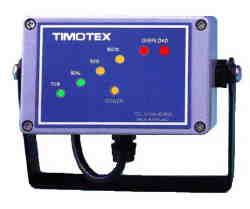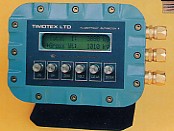PALLET & FORK LIFT WEIGHING
GENERAL INTRODUCTION
This guide provides an objective view of the various types of weighing systems available on the market for warehousing, logistics and a wide range of industrial applications together with the issues to be considered prior to purchase, taking into account the exact specification and requirements.
THE WEIGHING PROCESS
Many industrial and commercial companies require weighing activities in their process, for example, checking weights prior to onward transportation, establishing weights for invoicing, monitoring incoming goods, stock, production and despatch control, control of waste, health, safety and legislative requirements.
Increased technology now leads to further applications being possible.
A) BEAM, PALLET & PLATFORM SCALES
These form the most basic and cost effective form of weighing pallets, containers, boxes and drums. These are portable systems.



Advantages
*Specially prepared site unnecessary
*Portable and saves space
*Low cost solution
*Trade approved versions available
*Minimal training required
Disadvantages
*Relatively limited weight capacity
*Non mobile
*Requires alternative means of handling for the items to be lifted and placed
B) PALLET TRUCK SCALES
A basic and entry level mobile weighing system, suitable for use in lower weight applications.


Advantages
*Low cost mobile solution
*Trade approved versions available
*Minimal training required
*Manoeuvrable and space saving equipment
Disadvantages
*Limited weight capacity
*Can be prone to abuse
*Manual effort required
C) POWERED PALLET TRUCK SCALES
Providing load indication on more sophisticated powered pallet trucks which have potentially higher weight carrying capability than manual versions. Both load cell and hydraulic systems are available and this is explained later in this document.

Advantages
*Increased capability over manual versions
*Trade approved versions available
*Less manual effort required
*Various weighing options available
Disadvantages
*Less manoeuvrable on increased weights
*Higher cost than a standard pallet truck
D) FORK LIFT TRUCK SYSTEMS
Different systems are available for varying applications and accuracy requirements as follows:
– Hydraulic Load Indicators
– Hydraulic On-board Weighing Systems
– Fork Scale & Integrated Fork Scale
– Carriage Scale System
– Hazardous Zone Weighing
a) Hydraulic Load Indicator

Fitted as a basic and cost effective system, with a transducer fitted integrally into the hydraulics of the truck, the indicator enables simple overloading checks to be performed, often by means of green, amber and red LED indication of load weight. These systems are particularly suitable for applications where the load centre remains constant.
Advantages
*Very cost effective to purchase and maintain
*Simple visual and audible functions
*Universal fitting applications
*Can be easily moved to different trucks
*Enhances operator safety
Disadvantages
*Limited functionality
*Less accurate than more sophisticated systems
*Not trade approved
*Limited options available
*No moving parts
*Does not monitor forward/lateral moment of load
b) Hydraulic Onboard Weighing Systems
Offers the most cost effective means of onboard mobile weighing which provides detailed weight information and is one the most popular products.



Advantages
*Cost effective to purchase and maintain
*Good value for money solution
*Universal fitting applications
*Enhanced features available
*Accuracy unaffected by a change of lifting attachment or load centre
*Can be easily moved to different trucks
*Can incorporate truck overload alarm
*Can be fitted when attachment precludes load cell systems in forks
*No moving parts
*Saves time-consuming trips to and from fixed scales
*Saves time through stocktaking by weight
*Check weighs incoming supplies and outgoing products
*Can help to avoid overloading of forklifts/vehicles/racking
*Helps to reduce truck wear and tear
*Does not affect driver visibility or truck lifting capacity
*Promotes safer use of lift truck
*Depending on system manufacturer, can be fitted to most Counterbalance and Reach Trucks, Powered Pedestrian, Narrow Aisle Trucks, Side Loaders and Container Handlers as well as Loading Shovels, Wheeled Loaders, Skid Steers, Excavators, and Tractor Loaders
*Depending on system manufacturer, can incorporate truck overload alarm
*Can be used with attachments
*Hazardous zone configurations
Disadvantages
*Less accurate than load cell based systems
*Not Trade Approved
c) Fork Scale & Integrated Fork Scale
These systems are based on load cells, which are built into new replacement forks of the lift truck.
They operate completely independently of the lift truck, and on many suppliers’ equipment, the indicator is on top of one of the forks with the battery built into the other.


Advantages
*Fast, accurate (0.1%) & reliable
*Easy to install (no cabling necessary on integrated systems)
*Radio Frequency options are available
*Minimal changes to be made to the fork lift truck
*Systems are easy to change from one lift truck to another
*Can be trade approved
*Stainless steel forks available for use in hazardous areas
*Enhanced options & software available
*Reliable, robust, dust and water resistant to IP65
*No deration
*Weight reading as soon as load lifted off the ground
Disadvantages
*Can be more costly than hydraulic systems
*More servicing required to maintain accuracy
*Potential loss of visibility on integrated systems
*Replacement forks more expensive
*Cannot be fitted when attachment used
*Load cells in forks more susceptible to damage
*Forks are wider and deeper than standard which may limit the pallets and stillages that can be weighed
d) Carriage Scale
This system is fitted to the fork carriage, which runs within the mast of the truck. Can be used on trucks, which carry handling attachments, such as rotators, grabs, clamps, etc.



Advantages
*The original forks remain in place without modification
*Fast, accurate (0.1%) & reliable
*The actual weighing system is less likely to get damaged
*Can be used on trucks where attachments other than forks are required
*Trade approved scales are available
*A range of options are available
Disadvantages
*More expensive than other options
*Because of the weight of the system itself and where it is fitted, it reduces the lifting capacity of the truck
*May suffer greater variations on readings
*Loss of driver visibility
e) Hazardous Zone Weighing
For use in Zone I and II hazardous areas, special systems are available to meet current regulations.

Systems for lift trucks are available which operate both on hydraulic and load cell systems, in addition to the hand pallet truck. The advantages and disadvantages are comparable to the standard systems.
This article is presented by courtesy of Timotex


